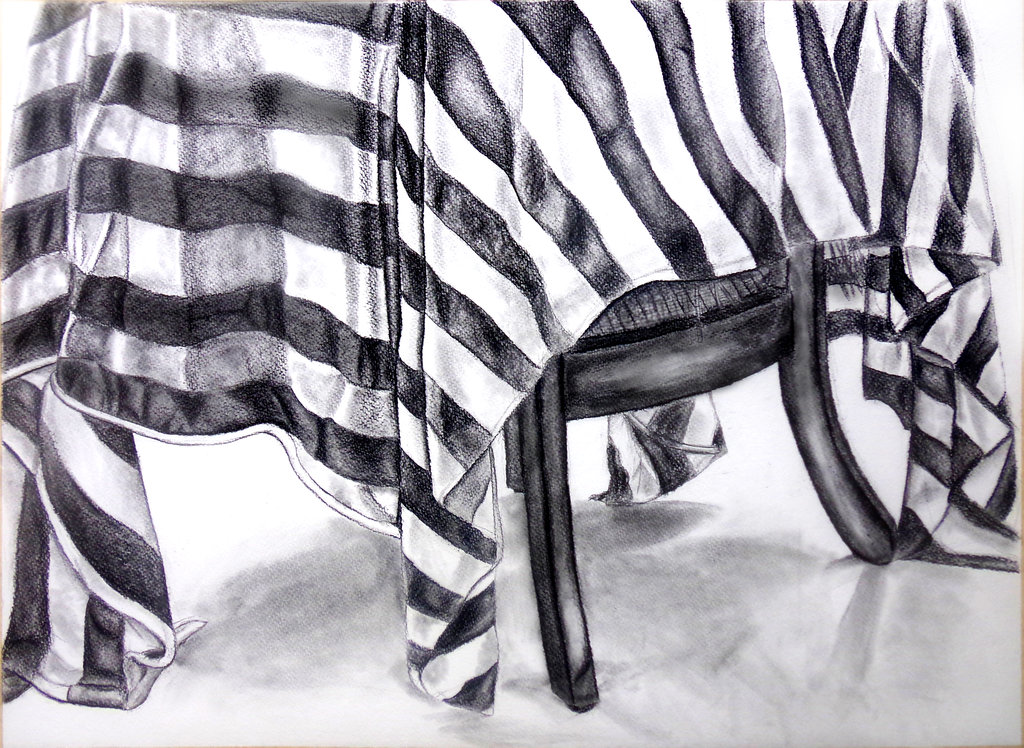
Chair Still Life
During the first weeks of class, I feel that my development as a student and as an artist have been significant. Leading up to this current charcoal project, we’ve been given time to experiment with the medium, making sure we’ve all had adequate experience using our tools, and were comfortable by the time this major project was announced
For me personally, my feelings were varied throughout this time period. Coming into it and during the first projects, I felt very comfortable knowing I had a strong background in traditional art. As the projects progressed, I found myself less familiar with the methods being used; I had very little background with charcoal pencils, as well as working on an easel. The new form that we were being taught seemed completely foreign to me, and I was discouraged by the quality of some of my original works in the medium. Nevertheless, we were constantly repeating the same processes. While it may have seemed monotonous, it had occurred to me by the improving quality of my works that this practice was absolutely necessary.
When going about drawing the chair, one of the most important parts was choosing an angle that would best suite me. For me, I chose a seemingly uninteresting angle, and tasked myself with turning it into an interesting composition. Through my prior art experience, I’ve been told many times what makes an interesting composition; dynamic angles and suitable framing (with the object touching at least three sides of paper). Originally, the image was rather flat during the initial stages, but the lighting was exaggerated and a sense of atmospheric perspective was achieved by bringing out the darks in the foreground, while objects in the background became lighter to create a sense of depth. Also, to emulate a greater sense of distance, the foreground of the image was sharper with details, while background became fuzzier. In terms of the Gestalt principles, one of the piece’s strong points is the use of continuation. Through the various wrinkles and value changes in the cloth, the eye moves across the picture quickly.
The project was done around the course of eight hours, with the majority being done on my own time. Much of class time was spent experimenting with different methods for shading the piece. Because of the small punctures in the watercolor, having the white of the paper revealed was a problem. The only way to counter this was to go over it in multiple layers in a time consuming process.
